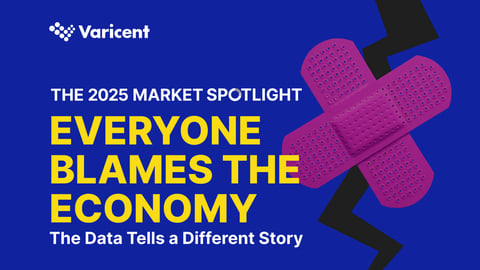The very first episode of What I Wish I Knew is live! Are you subscribed yet?
In this series, I’ll connect with an expert guest to cover details topics that everyone who cares about revenue growth, sales management, and incentive compensation wants to know more about.
For the first episode, What I Wish I Knew About AI and the Power of Prediction, I chat with Joel Shapiro, Chief Analytics Officer at Varicent. We get into a great conversation about AI and how to best use it for sales forecasting, managing pipeline, predicting seller churn, and more.
Here are some of the highlights. Watch the full episode to find out more.
AI Teases Out Trends
Let’s start with the basics. What exactly is Artificial Intelligence – a.k.a., AI? Joel describes it as sophisticated computing that allow us to tease out trends to help forecast what’s likely to happen next. AI lets us take what’s happened in the past and turn it into a really good prediction of what’s going to happen in the future.
AI Feeds Off of Specifics
Companies often want to jump into AI without understanding how it’s going to help them. Before investing in an AI strategy, avoid vague notions and get into the specifics. What problem are you trying to solve? Is it to grow market share? Retain customers? Better understand the characteristics of high performing salespeople? Once you nail down the business problem you’re trying to solve, an effective data strategy can flow more easily.
AI Mitigates Pipeline and Quota Surprises
Operational teams want to avoid surprises the make forecasts appear flawed. Some surprises happen, like an opportunity that grows 3x in value just prior to conversion, and AI can’t solve for all unexpected occurrences. It can, however, provide the odds of, say, a huge deal from reoccurring based on a similar set of circumstances, like account type, solution set, or a particular sales representative.
AI Flags the Risk of Seller Churn
While predicting seller churn is hard to pinpoint, AI can generate a risk flag through a series of probabilities. These factors can help managers be more proactive and focused on conversations to help reengage distracted reps and avoid the typical retention tactics that often only delay the inevitable. Even if you can’t save the seller from leaving, you can better plan and prepare for a transition.
Want more data-driven insights? Watch the full episode. And check out Joel’s latest Forbes article.
Remember to subscribe to our What I Wish Knew series, so you won’t miss our next episode. Also, let us know in the comments what you wish you knew more about. Maybe you’ll inspire a future episode!




